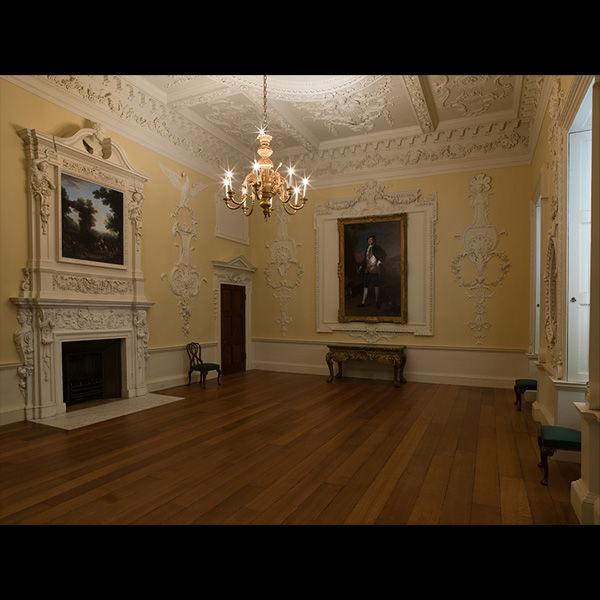Dining room from Kirtlington Park
Artwork Details
- Title: Dining room from Kirtlington Park
- Designer: John Sanderson (active from ca. 1730–died 1774)
- Maker: Chimneypiece possibly by Sir Henry Cheere (British, London 1703–1781 London)
- Maker: Chimneypiece possibly by John Cheere (British, London 1709–1787 London)
- Maker: Plasterwork attributed to Thomas Roberts (active 1685–1714)
- Date: 1748
- Culture: British, Oxfordshire
- Medium: Wood, plaster, marble
- Dimensions: confirmed: 20 ft. 2 in. × 35 ft. 5 in. × 23 ft. 5 in. (614.7 × 1079.5 × 713.7 cm); width extending into window niches 24 ft. 8 in. (751.8 cm).
- Classification: Woodwork
- Credit Line: Fletcher Fund, 1931
- Object Number: 32.53.1
- Curatorial Department: European Sculpture and Decorative Arts
Audio

408. Dining Room from Kirtlington Park
Gallery 511
NARRATOR: Welcome to the dining room from Kirtlington Park, which was dismantled in the 1950s and reassembled in New York. The intricate stucco that lines the ceilings and walls is by Thomas Roberts, using plaster molds copying popular designs made in Italy. Up close, you can admire the naturalism of the details, such as the plumes of feathers, of the Imperial Roman eagle. The festoons of wheat, fruit, and flowers–also sculpted with great precision– suggest endless bounty and connect to what would have been the grand landscape outside. Quite directly, in fact: the oak floors were likely carved from trees felled on the estate.
The home’s owner, John Dashwood was a conservative Tory party politician and this room was part of his grand estate in the rolling hills of Oxfordshire. It was an exceptional example of a British country house: from the land, to the architecture, and decorative arts inside–it all aligned with Dashwood’s political aspirations, and allowed him to leverage the land to provide for constituents. One visitor to the “noble” house lavished praise on its “finest pieces of the oldest China,” and–in an understatement to our ears–described the many “good pictures” on the walls.
The walls merit a closer look. The Met has conducted scientific research on thin layers of the distemper, or archaic paint, in the room three times since the 1950s. Why? To reapply it with the same technique in a shade as close as possible to the original straw yellow color you see here.
More Artwork
Research Resources
The Met provides unparalleled resources for research and welcomes an international community of students and scholars. The Met's Open Access API is where creators and researchers can connect to the The Met collection. Open Access data and public domain images are available for unrestricted commercial and noncommercial use without permission or fee.
To request images under copyright and other restrictions, please use this Image Request form.
Feedback
We continue to research and examine historical and cultural context for objects in The Met collection. If you have comments or questions about this object record, please complete and submit this form. The Museum looks forward to receiving your comments.
